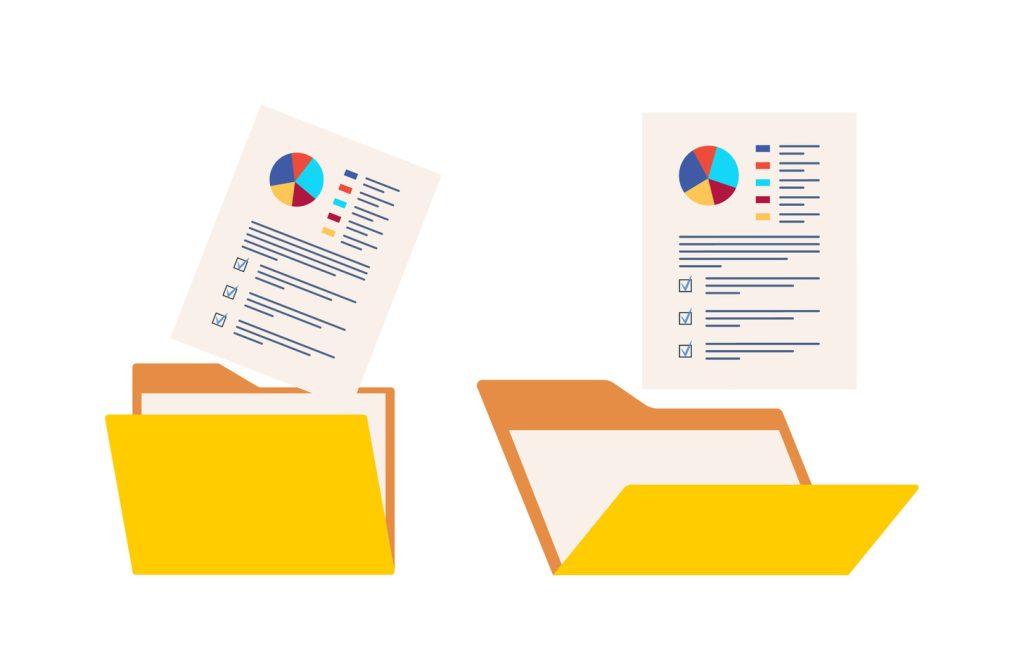The Ultimate Guide to Creating Effective Product Catalogs and Product Catalog Lists for Every Target Audience

In today’s fast-paced market, clear and accessible product information drives buyer decisions. A well-designed product catalog acts as a strategic tool that bridges the gap between businesses and their target audience, helping customers easily navigate product details, pricing, and availability to make confident purchasing decisions.
By consolidating specifications, pricing, and availability, it eliminates friction in the purchasing process – much like Amazon’s streamlined marketplace interface.
Modern organizations use well-designed product catalogs and product catalog lists to empower teams and engage customers. Also, these resources centralize critical product information, offering quick access to details, pricing, and inventory levels, while also helping businesses tailor content for different audiences and information needs.
Sales representatives gain quick access to critical details, while buyers appreciate transparent comparisons. However, this efficiency directly impacts sales performance, shortening decision cycles and boosting conversion rates.
Effective catalogs go beyond static lists. And, they create immersive experiences through visual storytelling and organized layouts. When customers easily find what they need, satisfaction improves – strengthening brand loyalty over time.
But, this guide explores how to build catalogs that serve as dynamic sales enablement tools. From structuring content to aligning with branding standards, each step focuses on practicality. Instead, businesses will learn to transform basic inventories into assets that drive measurable results.
Key Takeaways
- Centralized product details accelerate purchasing decisions for both businesses and customers.
- Streamlined information access reduces sales cycles by up to 30% in optimized cases.
- Visual organization and clear pricing models enhance user engagement.
- Dynamic catalogs improve team efficiency across sales, marketing, and customer service roles.
- Regular updates ensure accuracy and maintain trust with audiences.
Understanding the Role of a Product Catalog
Navigating today’s market demands requires quick access to accurate product data. A well-structured catalog bridges operational gaps by centralizing specifications, pricing, and availability. It transforms fragmented details into actionable insights for teams and clients alike.
What Is This Essential Business Tool?
As well as, this resource acts as a dynamic repository for company offerings. Unlike basic lists, it combines visuals, technical data, and real-time inventory updates. Despite, sales teams leverage it to maintain consistency across client conversations, while buyers use it to compare options efficiently.
“A centralized catalog cuts our sales onboarding time by 40%,” notes a retail sales director. “New reps deliver confident pitches using verified specs and pricing.”
Stakeholders Driving Results
Multiple departments and partners rely on this tool to achieve objectives:
| Role | Benefit | Use Case |
|---|---|---|
| Procurement Teams | Vendor comparisons | Budget approvals |
| Warehouse Managers | Inventory accuracy | Storage optimization |
| Channel Partners | Training materials | Client presentations |
Field marketers report 25% higher demo conversion rates when using interactive versions. External partners, from resellers to agencies, depend on updated details to align messaging. Real-time access ensures all stakeholders operate from the same data – reducing errors and delays.
Essential Elements for a Winning Catalog Design
Strategic visual organization and precise data presentation separate effective resources from generic listings. Businesses that master this balance create tools that convert browsers into buyers while reinforcing professional credibility.
Visual Impact and Branding
High-resolution images capture attention faster than text-heavy layouts. In contrast, a tech retailer increased engagement by 37% after switching to full-screen photography with consistent color accents matching their brand palette.
Layout consistency matters. Aligning image grids with clean typography creates intuitive navigation. One industrial supplier reduced customer service inquiries by 29% using standardized icons for technical features.
“Our redesigned catalog cut average decision time from 14 to 9 minutes,” says a home appliances marketing director. “White space and visual hierarchy guided users naturally.”
Critical Content and Data Points
Technical specifications should answer questions before they arise. Include measurements, compatibility notes, and material details. Yet, a furniture company saw 22% fewer returns after adding 360-degree views with scale references.
Transparent pricing builds trust. Display base costs alongside bulk discounts or seasonal offers. Customer reviews placed near product details increased conversion rates by 18% for an outdoor gear vendor.
Warranty information and return policies require prominent placement. Position them near checkout prompts to alleviate purchase anxieties. Alternatively, this tactic boosted high-ticket sales by 41% for an electronics distributor.
Types of Product Catalogs and Their Uses

Businesses choose communication tools based on audience behavior and operational needs. Nonetheless, four primary formats dominate modern commerce – each serving distinct purposes across industries.
Digital Platforms vs. Physical Materials
Interactive digital resources outperform static formats in engagement metrics. Furthermore, these tools allow users to:
- Zoom into high-res 360° views of items
- Filter options using dynamic search bars
- Access real-time inventory data during browsing
“Our switch to clickable catalogs increased quote requests by 53%,” reports a retail manager. “Videos demonstrating product assembly reduced support calls significantly.”
| Format | Strengths | Ideal For |
|---|---|---|
| Digital | Instant updates, analytics tracking | Tech-savvy audiences, remote teams |
| Tactile experience, no device needed | Trade shows, senior demographics |
Physical materials maintain value in specific scenarios. Medical equipment suppliers often use printed sheets during hospital visits where device restrictions apply. Luxury brands leverage heavyweight paper stock to convey exclusivity.
Specialized formats address niche requirements:
- B2B resources integrate with procurement systems
- Retail versions prioritize visual storytelling
- Sales-team tools include competitor comparisons
Hybrid approaches now dominate – 68% of manufacturers pair QR codes with printed materials. Besides, this bridges generational preferences while maintaining data accuracy.
Building an Effective Product Catalog List for B2B and B2C

Successful businesses recognize that one-size-fits-all approaches rarely satisfy diverse client needs. Customizing resource design for specific buyers ensures relevance and drives measurable outcomes.
Tailoring Information for Different Audiences
B2B lists prioritize utility over aesthetics. Procurement teams require detailed technical specifications, bulk pricing tiers, and ERP integration capabilities. A manufacturing supplier reduced order errors by 62% after adding real-time inventory updates to their digital catalog list.
“Our industrial clients need ISO certifications upfront, not lifestyle imagery,” explains a construction materials VP. “Clear data hierarchy shortened their approval cycles by three weeks.”
B2C formats thrive on visual storytelling. Retail products perform best with lifestyle photography and benefit-driven descriptions. One outdoor gear company saw 48% higher mobile conversions after grouping items by adventure scenarios rather than technical features.
| Element | B2B Focus | B2C Focus |
|---|---|---|
| Technical Details | Full specifications | Key highlights only |
| Pricing Models | Volume discounts | Promotional offers |
| Navigation | Industry categories | Use-case groupings |
| Language | Jargon-accepted | Conversational |
Information architecture adapts to target audience priorities. While B2B resources organize items by application, consumer versions might sort by seasonal trends. Both formats benefit from adaptive search filters that address specific information needs.
Pricing transparency remains critical across sectors. Business buyers expect negotiable terms, whereas retail shoppers respond to limited-time deals. A kitchenware brand increased average order value by 33% using targeted upsell prompts in their digital catalog list.
Interactive Tools and Techniques for Catalog Enhancement
Innovative businesses now elevate their digital assets through immersive technologies that bridge information gaps. Moreover, these solutions transform static content into dynamic experiences, driving engagement while capturing actionable insights.
Embedding Multimedia and Interactive Elements
High-impact visuals reduce buyer uncertainty better than text alone. Videos demonstrating item assembly or functionality decrease return rates by 29% in retail sectors. Augmented reality features let users visualize furniture in their space, boosting conversion rates by 41% for home goods companies.
“Interactive 3D models increased our online engagement time by 63%,” shares a manufacturing marketing director. “Customers explore components from every angle before requesting quotes.”
Leveraging Analytics and Lead Capture
Behavior-tracking tools reveal which specifications attract the most attention. When users spend 45+ seconds viewing details, automated forms offer personalized consultations. Again, this strategy generates 22% more qualified leads than traditional landing pages.
- Heatmaps show navigation patterns for layout optimization
- Real-time inventory alerts prevent abandoned carts
- Download-gated content builds email lists organically
Integrating with ERP and CPQ Systems
Automated data flows between platforms eliminate manual updates. When pricing changes in ERP software, connected resources reflect adjustments instantly. CPQ integrations enable:
| Feature | Business Impact |
|---|---|
| Custom configurations | 27% faster quote generation |
| Bulk discount calculators | 18% higher order values |
| Compatibility checkers | 35% fewer support tickets |
Lastly, these connections ensure teams always access accurate information, from warehouse stock levels to client-specific pricing tiers.
Strategies for Managing and Updating Your Catalog

Real-time synchronization transforms catalog reliability from an operational challenge into a competitive advantage. Businesses that master dynamic updates eliminate discrepancies between marketing claims and actual stock levels.
Powering Decisions With Live Insights
Modern inventory systems connect sales channels with warehouse data, displaying precise stock counts. A construction supplier reduced canceled orders by 58% after implementing live availability alerts. Automated triggers update digital resources instantly when:
- Pricing adjusts for seasonal promotions
- New items enter the distribution network
- Technical specifications undergo revisions
“Our ERP integration updates 12,000 SKUs hourly,” explains a retail supply chain director. “Sales teams access accurate specs during client calls – no more ‘I’ll check and call back’ delays.”
| Manual Updates | Automated Systems |
|---|---|
| 48-hour latency | Instant synchronization |
| 67% error rate | 99.8% accuracy |
| Limited scalability | Handles 1M+ items |
Centralized content hubs prevent version conflicts across departments. Regular audits flag discontinued products or outdated imagery. Workflow tools route changes through legal and compliance teams, maintaining brand standards without slowing updates.
Optimizing Your Product Catalog for Sales and Conversions

Maximizing visibility and usability transforms digital catalogs into revenue engines. Strategic alignment of technical precision and customer-centric design bridges discovery with decision-making. Businesses achieve this balance through two interconnected strategies: search engine dominance and frictionless navigation.
SEO Best Practices and Keyword Distribution
Search-optimized resources rank higher by embedding target phrases in titles, meta descriptions, and image alt-text. Structured data markup helps search engines understand specifications, pricing tiers, and availability. A telecom supplier increased organic traffic by 73% after implementing schema markup for bulk discount visibility.
“Proper keyword placement reduced our cost-per-acquisition by 34%,” shares an e-commerce director. “Category pages now convert at 11.2% – triple last year’s rate.”
- Prioritize long-tail keywords like “industrial-grade welding tools under $500”
- Optimize load speeds below 2.3 seconds using compressed images
- Build backlinks through guest posts on industry-specific platforms
Enhancing User Experience and Engagement
Intuitive layouts guide visitors toward purchases. Mobile-first designs account for 68% of retail traffic, requiring thumb-friendly navigation and instant filters. A/B testing reveals which layouts reduce bounce rates – one outdoor brand cut exits by 41% using sticky “Compare” buttons.
| Factor | Impact |
|---|---|
| 1-click filtering | 22% faster product discovery |
| Live chat integration | 31% higher cart completion |
| Guest checkout option | 58% fewer abandoned purchases |
Trust signals like SSL badges and money-back guarantees ease buying anxieties. Displaying real-time stock counts beside prices prevents cart abandonment – a furniture retailer saw 29% fewer canceled orders after implementation.
Conclusion
Well-structured catalogs serve as dynamic engines for business growth. Additionally, they transform complex inventories into accessible resources, empowering teams and accelerating customer decisions. When designed strategically, these tools become silent sales partners – available 24/7 to guide purchase journeys.
Modern buyers expect instant access to specifications, pricing, and visual details. Centralized data eliminates guesswork while building trust through transparency. Businesses that prioritize intuitive layouts and real-time updates see faster order cycles and stronger client relationships.
Most importantly, the true power lies in adaptability. Whether through mobile-friendly interfaces or integrated ERP systems, top-performing catalogs evolve with market demands. They balance visual appeal with functional depth, addressing diverse audience needs without overwhelming users.
Investing in this resource pays measurable dividends. Companies report streamlined operations, reduced support costs, and higher conversion rates when details align with buyer priorities. Regular refinements ensure content stays relevant as offerings expand.
Forward-thinking organizations treat their catalogs as living assets. By combining robust data management with customer-centric design, businesses turn routine transactions into seamless experiences. The result? Confident buyers, empowered teams, and sustained revenue growth.

